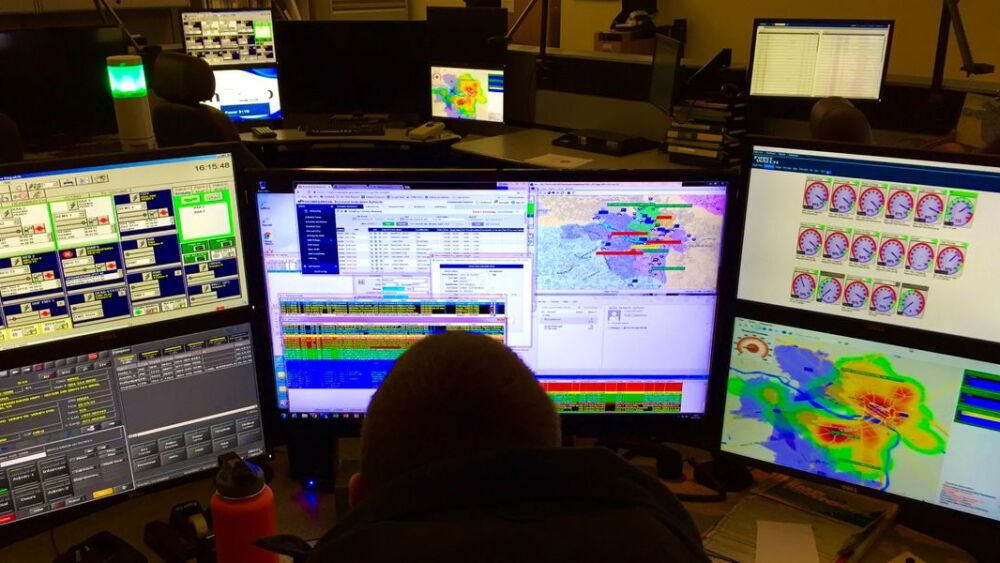By David Hernandez
The San Diego Union-Tribune
SAN DIEGO — Three months after the Sheriff’s Department encrypted its radio communications, the department last week rolled out a online page that shows what calls deputies are handling.
The department said the page allows transparency by providing information to the public without disclosing people’s personal information.
One critic who previously relied on scanners to track law enforcement activity said the information on the page is limited, but it’s better than no information at all.
The Calls for Service online page shows basic information: the type of incident reported and the date, time and general location of each call. The page shows active and recently “closed” calls, with updates to the page every five minutes. The information is available at callsforservice.sdsheriff.org.
The department rolled out the page in response to concerns over the encryption of radio communications between its dispatchers and deputies. The encryption cut off the public’s long-standing access to real-time information that anyone with a scanner could listen to — more so in recent years with the advent of online and cellphone scanner apps.
The switch to encryption came after the California Department of Justice in late 2020 directed law enforcement agencies to protect personal information gleaned from a database system. The information — such as names, dates of birth and driver’s license numbers — was sometimes broadcast over police radios, including instances in which officers or deputies would ask dispatchers to tap into the databases to run a background check.
In response to the directive, many law enforcement agencies, including most in San Diego County, encrypted their radio communications.
However, not all agencies moved to encryption. Some, including the San Diego Police Department, continue to use unencrypted channels and switch to separate, encrypted channels to broadcast people’s personal information.
The Sheriff’s Department, like other law enforcement agencies, said encryption was the best option to comply with the directive. The department said switching between channels could be difficult, if not impossible, especially in incidents that unfold quickly.
Critics, many of them police reform advocates, said blanket encryption limits transparency of day-to-day public safety and policing matters, and that it forces the public to rely on law enforcement agencies for information. They said the move runs contrary to ongoing demands for more transparency from law enforcement agencies.
Examples of details gleaned from unencrypted scanner traffic include information about road closures, police pursuits, traffic stops and crime. News reporters for decades have relied on scanner traffic to report on newsworthy events.
[RELATED: Managing the media when crisis hits your hometown]
In a statement announcing the new online page, the department acknowledged the concerns about encryption. The statement said the department evaluated options to disseminate information and landed on the online page — which the department called “a solution to continuously provide information to the public and our media partners while protecting confidential private information.”
Imperial Beach resident Marcus Boyd, who periodically records video of encounters between deputies and the public, said he used to rely on scanner traffic to track law enforcement activity. That’s no longer possible with encryption, which he opposes.
In a recent interview, Boyd said the new Sheriff’s Department online page is useful — to a degree.
“It’s not a perfect replacement for the scanner,” Boyd said. “There are no back stories, no details. (There’s) very limited information.”
But “at least there’s this,” he said, referring to the online page.
Boyd, a former database programmer, launched an app, called CopWatcher, that includes a variety of features, including the ability for users to flag law enforcement activity, in part to allow others to respond and capture video.
Now, with the rollout of the Sheriff’s Department online page, Boyd added a feature to the CopWatcher app to allow users to sign up for email or text message alerts about incidents that appear on the page.
The future of encrypted radio communications is uncertain. Last week, a state bill that would require law enforcement agencies to find alternatives to encryption cleared an early hurdle when the Senate Public Safety Committee voted to advance the legislation, according to news reports. Senate Bill 1000 calls for policies that protect personal information without full encryption of radio communications.
Next the Senate Appropriations Committee will consider the bill.
This story originally appeared in San Diego Union-Tribune.
©2022 The San Diego Union-Tribune. Visit sandiegouniontribune.com. Distributed by Tribune Content Agency, LLC.


